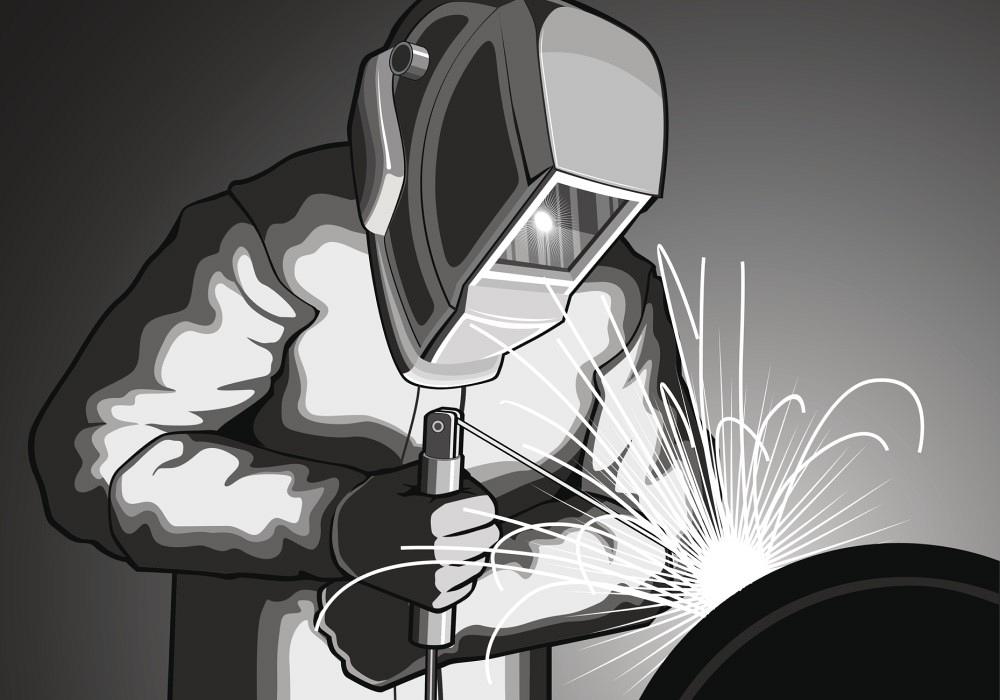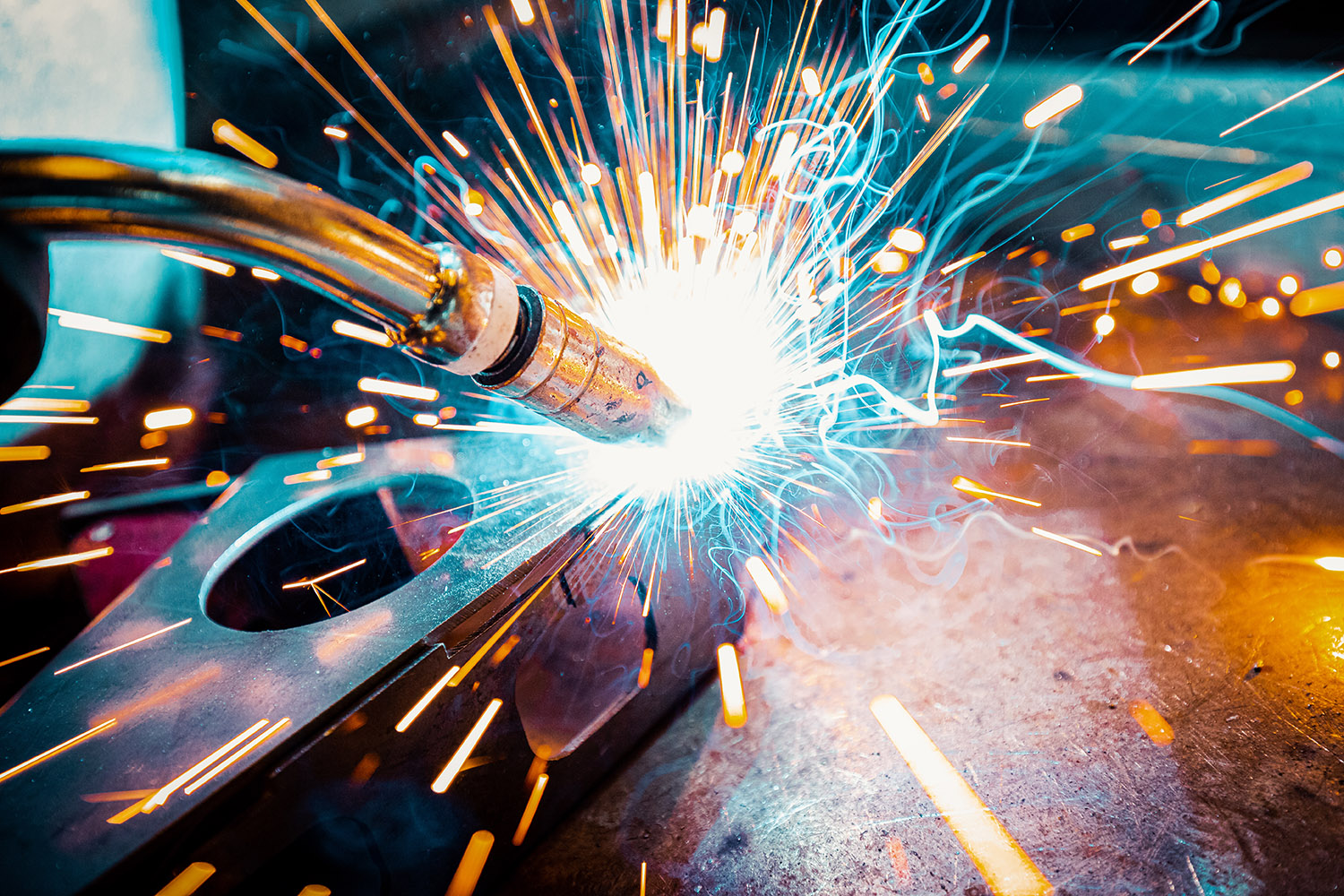Field guide for weld distortion by Belgrade Fabrication
Everything about Welding: Key Insights Into Techniques and Finest Practices for Success
Welding incorporates a selection of strategies, each fit for particular products and applications. Understanding these methods, such as GMAW, SMAW, and TIG, is vital for accomplishing excellent results. The right devices and safety and security techniques can not be ignored. As prep work and repairing play essential duties in the welding procedure, mastering these aspects can considerably improve the quality of the last product. What are the vital aspects that ensure a successful weld?
Recognizing Various Welding Techniques
Welding strategies encompass a variety of approaches, each suited to specific applications and products. Amongst one of the most typical methods are Gas Metal Arc Welding (GMAW), Secured Steel Arc Welding (SMAW), and Tungsten Inert Gas Welding (TIG) GMAW, likewise understood as MIG welding, is preferred for its rate and convenience, making it ideal for slim materials. SMAW, or stick welding, is preferred for its simplicity and efficiency in exterior settings, specifically with thicker metals. TIG welding uses precision and control, making it appropriate for complex work and non-ferrous steels (Belgrade Fabrication). Each strategy has its special advantages and factors to consider, enabling welders to select the finest method based upon the task's needs, material kind, and preferred outcomes. Understanding these methods is necessary for successful welding
Necessary Welding Tools and Tools
While different welding methods call for details abilities, the best devices and devices are similarly important for attaining top quality results. Essential welding equipment consists of welding makers, which differ relying on the strategy-- such as MIG, TIG, or stick welding. Safety gear, consisting of aprons, handwear covers, and safety helmets, warranties safety and convenience during the process. Furthermore, components and clamps aid secure materials in position, ensuring accuracy in welds. Consumables like welding rods, cable, and protecting gas are likewise important elements that influence the top quality of the weld. Tools such as mills and cutters promote surface area prep work and post-weld completing, contributing to an expert end result. Purchasing high-quality equipment ultimately enhances the effectiveness and performance of welding projects.
Safety Practices in Welding
Proper safety methods are vital in the welding market to secure workers from possible risks. Welders must wear ideal individual protective equipment (PPE), including helmets with appropriate shading, gloves, and flame-resistant garments. Ample air flow is crucial to lower exposure to damaging fumes and gases created throughout the welding procedure. In addition, employees should be educated in the correct handling of welding tools to stop mishaps. Fire precaution, such as keeping combustible materials away from the welding area and having fire extinguishers easily offered, are essential. Normal assessments of tools and work spaces can aid identify possible risks before they bring about accidents. By adhering to these security practices, welders can create a safer working setting and lessen risks linked with their profession.
Preparing Materials for Welding
Preparing products for welding is a vital action that substantially influences the high quality and stability of the end product (Belgrade). Proper preparation involves cleansing the surfaces to get rid of impurities such as oil, dust, and corrosion, which can endanger the weld. Techniques such as grinding, fining sand, or making use of solvents are frequently utilized to accomplish a clean surface. Additionally, making sure that the products mesh snugly is important; spaces can lead to weak welds. It's likewise important to take into account the placement and positioning of the components, as this will affect the simplicity of welding and the final end result. Choosing the ideal filler material and making sure compatibility with the base steels is necessary for attaining strong, resilient welds.
Tips for Achieving High-Quality Welds
Accomplishing premium welds needs attention to detail and adherence to ideal practices throughout the welding procedure. Appropriate joint preparation is necessary, making sure surfaces are clean and complimentary from contaminants. Picking the suitable filler product and welding technique based on the base metals is essential for suitable bonding. Keeping consistent travel speed and angle while welding can avoid issues and advertise harmony. Furthermore, controlling warmth input is crucial; too much warmth can lead to warping and weakened joints. If required, on a regular basis evaluating the welds throughout the process permits for immediate changes. Employing proper post-weld treatments, such as cleaning and stress alleviation, can improve the resilience and stability of the weld, inevitably making sure an effective end result.
Troubleshooting Usual Welding Issues
Welding frequently provides difficulties that can impact the high quality and honesty of the last product. Typical problems such as porosity, irregular weld beads, and getting too hot can emerge, each needing particular troubleshooting strategies. Understanding these problems is necessary for welders to improve their skills and attain optimal outcomes.
Porosity Troubles Discussed
Porosity can often be forgotten, it remains an essential problem in welding that can compromise the integrity of an ended up product. Porosity refers to the presence of small gas pockets within the weld bead, which can lead and compromise the joint to early failure. This problem commonly occurs from pollutants, wetness, or incorrect securing gas insurance coverage during the welding process. To reduce porosity, welders ought to confirm that the base products are tidy and dry, make use of ideal securing gases, and maintain consistent welding specifications. Frequently checking the equipment and environment can additionally aid identify potential issues before they materialize in the weld. Resolving porosity effectively is necessary for achieving strong, sturdy welds that meet quality criteria.

Irregular Weld Beans
Irregular weld beads can substantially affect the quality and stamina of an ended up item. Different elements add to this issue, including inappropriate travel rate, wrong amperage settings, and inconsistent electrode angles. When the welder relocates too rapidly, a grain might show up slim and lack infiltration, while moving also slowly can trigger excessive accumulation. In addition, using the incorrect amperage can cause either damaging or too much spatter, both of which concession weld stability. The welder's technique, such as irregular lantern movement, can also bring about unequal bead look. To minimize these issues, welders ought to concentrate see this site on maintaining stable, regulated motions and ensuring correct tools settings to attain harmony in their welds. Uniformity is essential to accomplishing trustworthy and strong welds.
Getting Too Hot and Warping Issues
Extreme warm throughout the welding procedure can lead to significant getting too hot and buckling concerns, impacting the architectural stability of the workpiece. These issues usually show up as distortion, which can compromise positioning and fit-up, making additional assembly challenging. Variables adding to overheating include the option of welding specifications, such as voltage and take a trip rate, in addition to the kind of product being bonded. To alleviate these problems, welders need to maintain regular traveling rate and appropriate warm input while keeping an eye on the workpiece temperature level. In addition, preheating or post-weld warm treatment can assist reduce stress and anxieties triggered by rapid cooling - Montana Mobile Welding and Repair Welding. Routine assessment and adherence to ideal practices are essential in avoiding getting too hot and ensuring the long life and reliability of bonded frameworks
Frequently Asked Inquiries
What Are the Profession Opportunities in the Welding Industry?
The welding industry provides varied career opportunities, including settings as welders, teachers, engineers, and examiners. Experts can operate in production, building and construction, aerospace, and vehicle markets, benefiting from solid need and affordable salaries in different duties.
Exactly How Can I Enhance My Welding Rate Without Sacrificing High Quality?
To improve welding speed without sacrificing top quality, one need to exercise reliable methods, preserve devices, enhance settings, and improve hand-eye control. Normal training and looking for comments can additionally significantly contribute to attaining faster, high-quality welds.
What Qualifications Are Offered for Welders?
Various certifications exist for welders, including those from the American Welding Culture (AWS), the National Facility for Building And Construction Education and Study (NCCER), and numerous industry-specific organizations. These credentials boost employability and show ability efficiency.
How Does Welding Affect the Residences of Metals?
Welding affects the residential properties of steels by altering their microstructure, which can bring about modifications in ductility, strength, and hardness. Heat input and cooling rates during the procedure greatly influence these product features.
Can I Weld Dissimilar Metals With Each Other?
